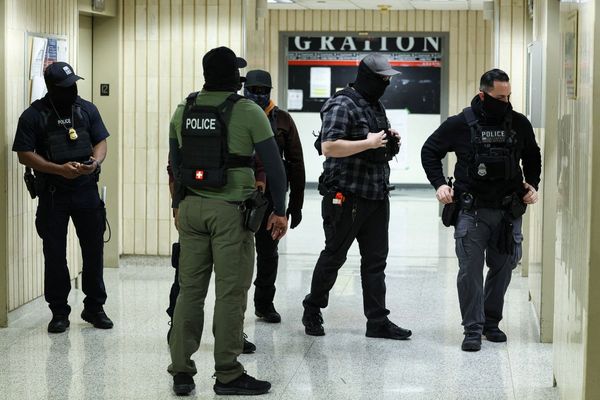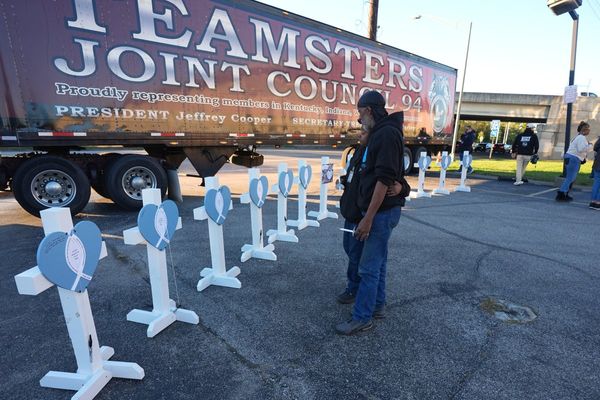
US warplanes conducted air strikes on a weapons storage facility in Syria used by Iran-backed militants on November 8 in retaliation for the growing number of attacks on US military interests in the region, the second such strikes in less than two weeks. The strikes illustrate the delicate balancing act the US must carry out as it aims to protect its interests in the region without escalating the war between Israel and Hamas into a regional conflict.
In a statement immediately released after its latest military strike in eastern Syria, Washington appears to have weighed every word to limit the risk of escalation. “US military forces conducted a self-defence strike on a facility in eastern Syria used by Iran's Islamic Revolutionary Guard Corps (IRGC) and affiliated groups,” said US Defence Secretary Lloyd Austin.
Damage control
The US leadership insisted upon the limited nature of its military operation. A senior US military official interviewed anonymously by CNN said the US is “very certain” Wednesday’s strike “did not involve civilian loss”. He added that the US “did use the deconfliction line” with Russia before the strike, in reference to a special channel of communication established between Moscow and Washington to avoid military surprises in Syria.
"It’s clearly in the realm of deterrence effort, because in warfare you're trying to maximise the destruction, as opposed to what went on with these strikes," said Robert Geist Pinfold, a lecturer in international peace and security at Durham University.
The two US air strikes carried out since the beginning of the Israel-Hamas war were designed to take out supplies, weapons and ammunition linked to Iran, according to US intelligence services. “These are low-intensity targets,” said Veronika Poniscjakova, an expert on Middle East military strategy at the University of Portsmouth. The risk of collateral damage and human casualties were low, especially since “the US Army did wait until they were reasonably sure all personnel left the building”, added Pinfold.
The US military is aware that it has ventured into dangerous terrain ever since moving roughly 1,000 US service members and two aircraft carrier groups into the region. Officially, “the US deterrence is mainly aimed at stopping Hezbollah and Iran from opening a new front against Israel", said Poniscjakova.
Yet the simple presence of a US contingent off the Israeli coast “increases tensions and multiplies the risk of incidents”, said Pinfold. This projection of military power is seen as a demonstration of US support for the Israeli war effort and in the view of pro-Iranian militias, reinforces the legitimacy of attacks against US interests in the region.
Limits of 'made in America'-style dissuasion
The United States thus finds itself with two military goals: to prevent attacks against its positions in the Middle East and to “encapsulate the conflict [within] the Gaza Strip”, said Pinfold.
Yet, “for deterrence to work, the goal must be clear, and the other side must act rationally, which is debatable with groups like Hezbollah or the Houthis in Yemen, which have already launched missiles on Israeli military targets,” said Poniscjakova.
In his first speech since the deadly attacks on Israel on October 7, the leader of Hezbollah, Hassan Nasrallah, said on November 3 that Hezbollah was not intimidated by American threats and by US forces deployed to the region, adding that his movement is “prepared for whatever scenario”. This is Hezbollah’s way of “hinting at the possible use of anti-vessel missiles,” said Poniscjakova.
The limits of US dissuasion are further illustrated by the drone and rocket attacks on US forces which have continued in recent weeks, even after the initial October 26 strike in Syria. “There have been at least 22 more [attacks] since the American retaliatory strikes last month ... Iran-backed militias have packed even larger loads of explosives – more than 80 pounds – onto drones launched at American bases”, reported The New York Times.
"In these cases, there usually is a balance of deterrence, meaning there is an understanding of where the other side will attack and what are the acceptable means,” said Pinfold. In other words, both sides are testing each other’s limits.
The red line
According to Pinfold, further demonstrations of American military might and attacks against their interests will “lead to a slow, gradual escalation of tensions and not a dramatic one”.
The key is not to cross the red line. For the United States, this means “limited air strikes are tolerated, and I would say that ‘no US boots on the ground’ is the red line”, said Poniscjakova. “On the other hand, it all depends on what Hezbollah will do in the coming weeks. If they launch rockets at the north of Israel, it’s fine, but if they attack population centres or use anti-ship missiles, the US will be forced to respond.”
"This is a very, very dangerous game both are playing because there are a lot of variables [which are] impossible to control at 100%", said Pinfold. The US therefore depends on the quality of the intelligence it collects, which is always fallible, to avoid casualties during its strikes. "For example, when the Houthis [Iran-backed Yemeni rebels] send missiles into Israel, they expect them to be intercepted. But there can always be a failure to do so. And if they hit an urban centre, there will have to be a response," concluded Pinfold.
This article has been adapted from the original in French.







